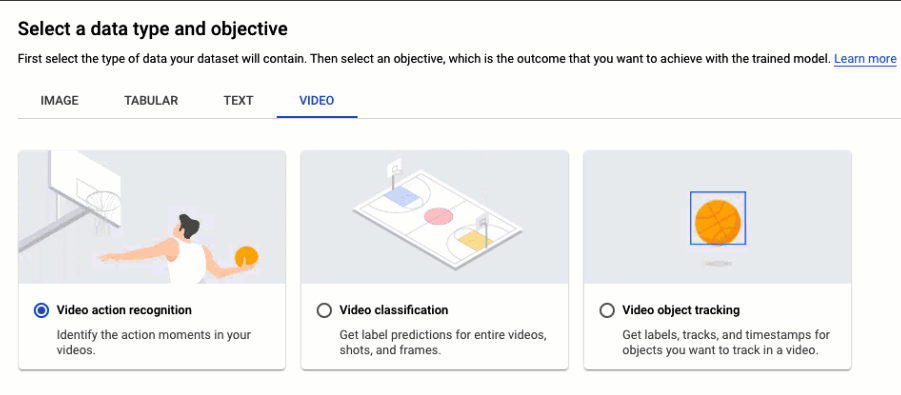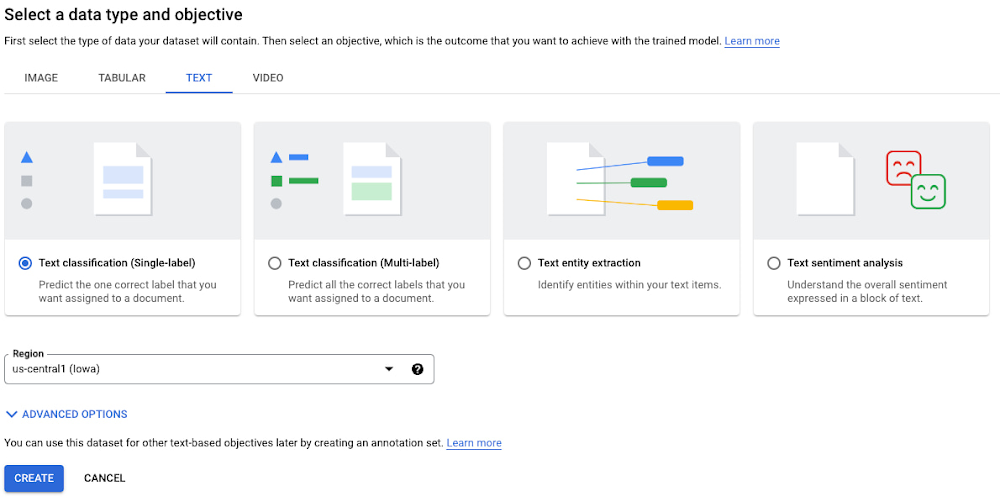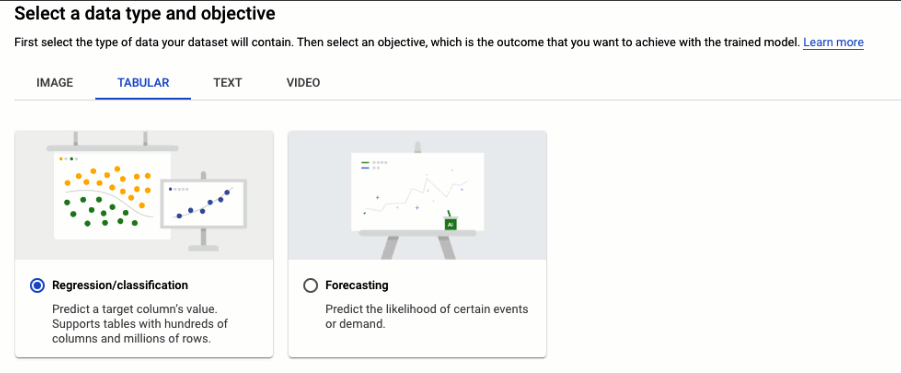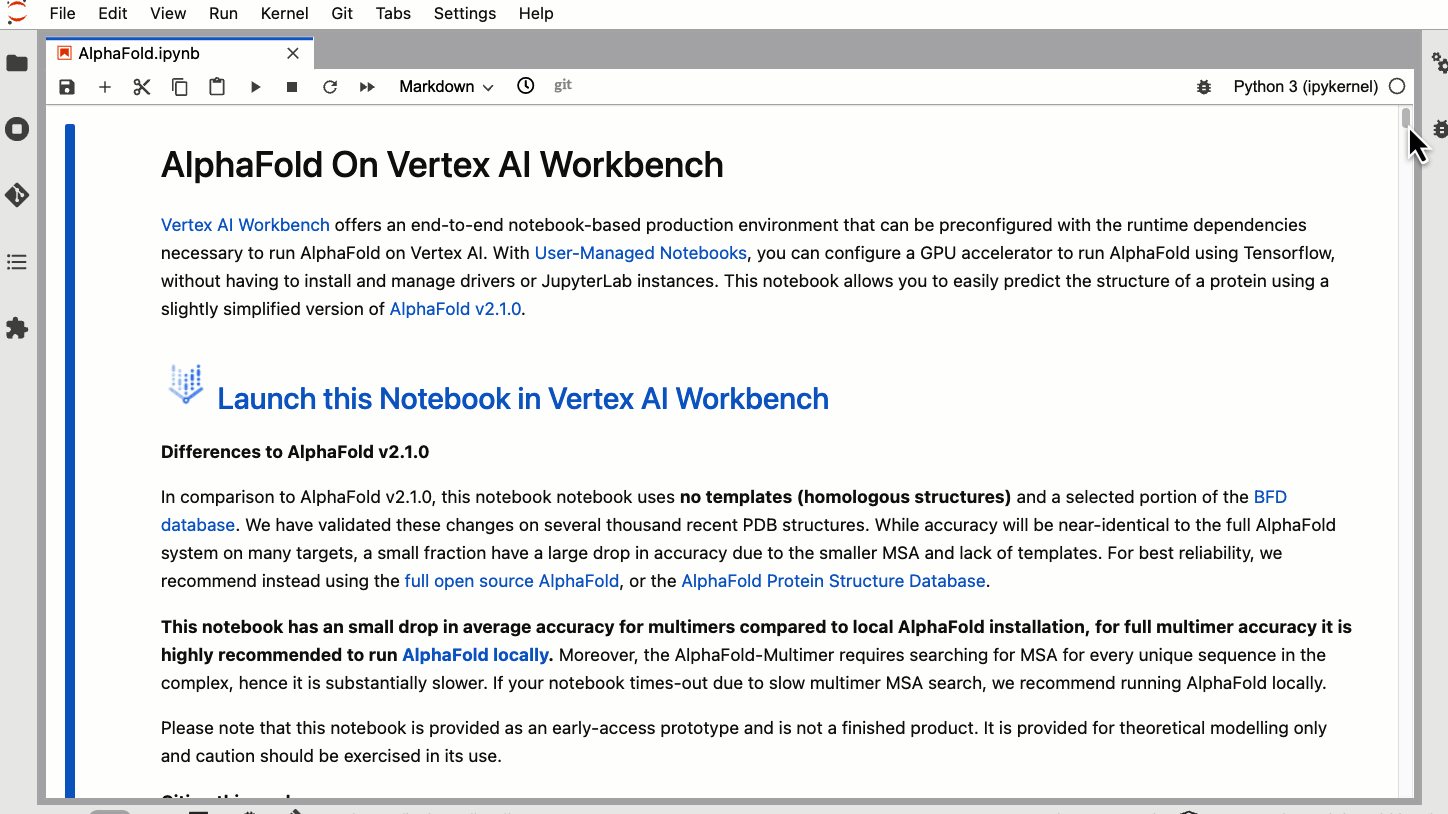AI has never been more front and center for both consumers and development teams. I have hosted AI conversations, and one of the top comments I get is how to get started in AI without a ton of resources or ML developers on hand. The first place I send people is the treasure trove of interactive tutorials we have right in the console. In fact, we have over 20 AI tutorials ranging from using pre-built models via APIs to building your own image classification model using Vertex AI. Let’s focus on our end-to-end ML platform, Vertex AI:
1. Train an Image classification model with AutoML Image

Dog or a cat? Hot dog or not hot dog? Image classification has been featured online and in shows, but it’s actually a hard problem. It takes a vast amount of images for training, lots of human labeling, and images have a high dimensionality of data to deal with.
Vertex AI is an ML platform that addresses these challenges by easing the process of building, deploying, and scaling ML models faster. AutoML is a part of Vertex AI that makes it even easier by giving you high-quality custom ML models with minimal effort and ML expertise. AutoML lets you build models with image, video, text, and tabular data.
This tutorial walks you through creating a Vertex AI dataset for image data, and then training a classification model with AutoML. Deploy the model to an endpoint and make online predictions. You’ll use a publicly-available dataset of flower images hosted on Cloud Storage.
2. Train a video classification model with AutoML Video

How many videos have you watched in the last day? I bet at least one (for me it’s usually 30+). Video content is exploding, and so has the need to better analyze and target video content to users. But the barrier to meaningful analysis of video data has been high.
Vertex AI AutoML Video lets you annotate video using custom labels, do streaming video analysis, shot change detection, and object detection and tracking. It makes it easy to train your own custom models to classify and track objects within videos, even if you have minimal ML experience. It’s ideal for projects that require custom labels that aren’t covered by the pre-trained Video Intelligence API.
This tutorial walks you through creating a Vertex AI dataset using sports videos on Cloud Storage. You then train a classification model with AutoML and make predictions in batch format.
3. Train a text classification model with AutoML Text

Text classification can be used to organize, structure, and categorize pretty much any kind of text. Natural language processing, for example, is critical to a flurry of use cases that require handling large amounts of text data: social media comments, customer support tickets, online reviews, news reports, and yes – it’s the basis for conversational AI. But it’s not easy to train and build an NLP model. Many teams aren’t ready to use BERT or XLNet (which are often overkill for projects revolving around classifying documents or doing sentiment analysis on a document).
Vertex AI AutoML Text reveals the structure and meaning of text through ML and lets you do custom entity extraction, custom sentiment analysis, with large dataset support and an integrated REST API.
This tutorial walks you through how to build a text classification model using a Kaggle open-source dataset to train a “happiness detector” model that classifies moments by their level of happiness.
4. Train a tabular data classification model with Vertex AI Tabular

Tabular data might not sound as exciting as images and video, but they can form a wealth of information that can help you predict outcomes. Let’s say you want to predict whether a bank client will buy a term deposit (a type of investment) using features like age, income, and profession. This type of model can help banks determine who to focus its marketing resources on. The most appropriate ML model to build for this would be binary classification. But building these models can still take a fair bit of work doing feature engineering, algorithm selection, and tuning.
Vertex AI Tabular allows you to perform machine learning with tabular data using simple processes and interfaces. You can create the following model types for your tabular data problems: binary classification, multi-class classification, regression, and forecasting.
This tutorial walks you through creating a Vertex AI dataset from open-source bank marketing data, and then training a classification model with AutoML. You then deploy the model to an endpoint and make online predictions.
*Pro tip: Learn tabular data 101 and Vertex AI Tabular Workflows.
5. Create a user-managed notebook with Vertex AI Workbench

For those getting started in ML or even looking to run deep learning frameworks, one of the best tools is Jupyter Notebooks. They provide an easy-to-use interactive data science environment that presents code, images, text, and output in a step by step manner.
Typically you’d have to install a Juypter notebook on a server. But if you are looking to run deep learning models, you can run into challenges of creating and configuring a deep learning virtual machine (VM) with potentially vulnerable images for ML frameworks.
Vertex AI Workbench user-managed notebooks save you the difficulty by providing verified, optimized, and tested images for your chosen framework. These notebooks come prepackaged with JupyterLab and a preinstalled suite of deep learning packages, including support for the TensorFlow and PyTorch frameworks. Your user-managed notebooks instances are protected by Google Cloud authentication and authorization, and they integrate with GitHub and can sync with a GitHub repository.
This tutorial walks you through how to enable the Notebooks API in a Google Cloud project, navigate to Vertex AI Workbench user-managed notebooks, create a user-managed notebooks instance, and open JupyterLab.
6. Train a custom ML model with Vertex AI Training
For models that take a long time to train, a notebook isn’t always the most convenient option. If you’re building an ML application, it’s unlikely you’ll only need to train your model once. Over time you’ll want to retrain your model to make sure it stays fresh and keeps producing valuable results. Manually executing the cells of your notebook might be the right options when you’re getting started with a new ML problem, but when you want to automate experimentation at scale or retrain models for a production application, a managed ML training option will make things much easier.
Vertex AI Training is different from AutoML. It lets you create a training application with a set of pre-built algorithms. You can bring your custom code to train models and it helps you package it up with Docker. It’s fully managed with AI infrastructure optimizations to reduce training time and cost.
This tutorial walks you through custom training on Vertex AI to run your own ML model training code in the cloud, instead of using AutoML. You’ll use Vertex AI’s custom training to run a TensorFlow Keras training application in one of Vertex AI’s pre-built container environments. You’ll use a publicly-available image dataset to train the model to identify types of flowers in images.
That’s not all
There are many interactive tutorials for ML/AI, including how to use our pre-trained ML APIs like Document AI, Speech-to-Text, and more. They’re a great way to get a feel of what AI on Google Cloud is like. Try them all out and see what product fits your needs!
